Home »
Misc »
How do fouls work in basketball
How do fouls work in basketball
Basketball Fouls
Home>Sports>Basketball>Basketball Fouls and Fouling
PreviousNext
Table of Contents
- Fouls
- List of Fouls
- Personal Fouls
- Defensive Fouls
- Shooting Fouls
- Offensive Fouls
- Flagrant Fouls
- Technical Fouls
- FAQ
Fouls
A foul in basketball is a rule-breaking action that results in a loss of possession and possible free throws. There are multiple categories of fouls:
- Personal Fouls: A foul that is physical in nature, like grabbing and pushing.
- Flagrant Fouls: A foul that involves extraordinary violent contact with an opposing player or a dangerous, non-basketball play.
- Technical Fouls: A foul that is unsportsmanlike, including screaming at the referee or an opponent.
In the NBA, if a player commits six fouls in a game, he is disqualified from playing in the rest of the game. The same is true for FIBA and college basketball, but the foul limit is five fouls.![]()
The rules of fouls differ at all levels of play for high school, NBA, college, and FIBA basketball.
The referees in basketball are responsible for calling fouls and violations throughout the game. The crew chief is the head official and makes the final decision on the court.
List of Fouls
Here is a list of fouls in basketball:
- Blocking Foul
- Charging Foul
- Defensive Foul
- Double Foul
- Flagrant Foul
- Illegal Screen Foul
- Intentional Foul
- Loose Ball Foul
- Offensive Foul
- Personal Foul
- Punching Foul
- Reach-in Foul
- Shooting Foul
- Technical Foul
Personal Fouls
A personal foul is any illegal physical contact by a player. For example, pushing, grabbing, hitting, and tripping are personal fouls. Personal fouls can be committed by both players on offense or defense, although there are more defensive fouls in a game than offensive fouls. Each personal foul also counts towards a team’s overall foul count.
Defensive Fouls
Defensive fouls are committed whenever players on defense use illegal contact to try to stop offensive players. Defensive fouls frequently happen in basketball. Defenders are allowed to move sideways and backward to block an attacker’s path, but moving forward (pushing the attacker backward) is not allowed. Players also can’t initiate physical contact on defense, as that is a foul that happens mostly when a player unsuccessfully tries to steal the ball or block a shot. Defensive fouls have different penalties depending on how and when they were committed.
Shooting Fouls
Whenever a defender commits a foul on the opponent while they are shooting, the player who suffered the foul gets to shoot free throws. These fouls are called shooting fouls. If the shooter was attempting a three-point shot, they get three free throws, or if it is a two-point attempt, only two free throws.
Offensive Fouls
Offensive fouls in basketball are illegal contacts committed by offensive players. Offensively, players sometimes foul when trying to get past defense by pushing or holding opponents. The most common offensive fouls are charging fouls and illegal screens. Every offensive foul results in a turnover, unless the team who committed a foul is in a penalty situation.
Offensively, players sometimes foul when trying to get past defense by pushing or holding opponents. The most common offensive fouls are charging fouls and illegal screens. Every offensive foul results in a turnover, unless the team who committed a foul is in a penalty situation.
Flagrant Fouls
Flagrant fouls occur when a player makes unnecessary and violent contact with an opposing player. These fouls are considered “non-basketball plays” and called for unnecessary actions such as striking another player in the head or neck. Flagrant fouls do not need to be intentional but often appear to be. There are two kinds of flagrant fouls: Flagrant 1 or Flagrant 2. A player who commits a Flagrant 2 foul will be ejected from the game. The result of any flagrant foul is two free throws and possession of the ball afterward.
Technical Fouls
Technical fouls are those that do not involve any physical contact, but violate sportsmanship rules. Technical fouls can be called for a range of prohibited actions, including calling for a timeout when the team has none left, using obscene language or gestures towards a player or referee, and fighting.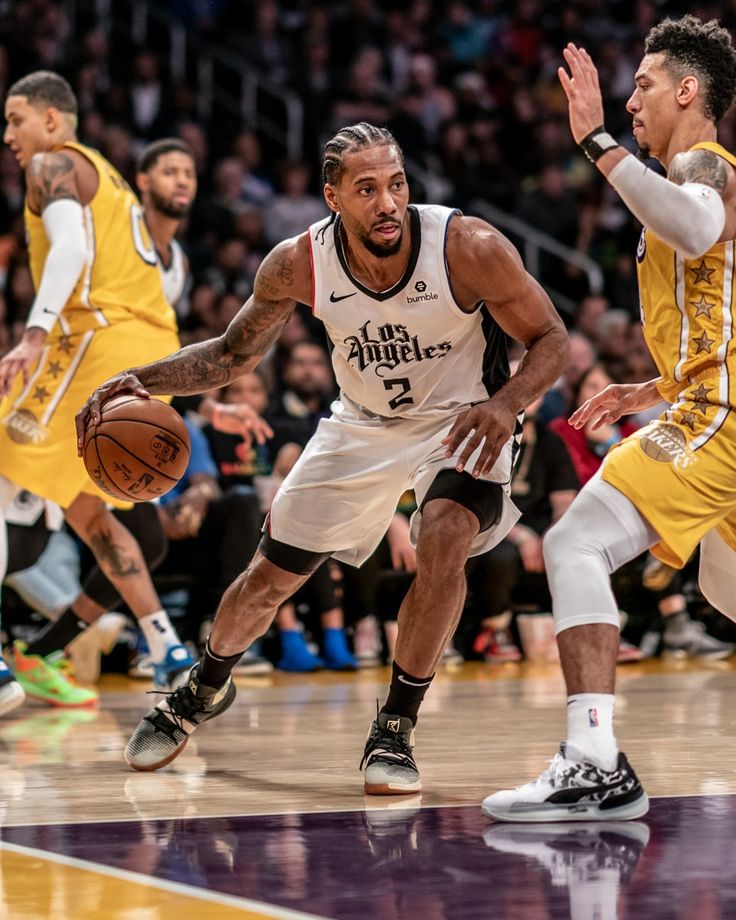 Technical fouls can be assessed to players, coaches, and even fans. The penalty for a technical foul is one free throw, after which the team who had possession of the ball will retain possession. If a single player receives two technical fouls during a game, they will be ejected.
Technical fouls can be assessed to players, coaches, and even fans. The penalty for a technical foul is one free throw, after which the team who had possession of the ball will retain possession. If a single player receives two technical fouls during a game, they will be ejected.
FAQ
How many fouls can a team commit in a game?
There is not a maximum amount of fouls a team can commit. However, once a team has reached a certain number of fouls (depending on the playing level), the opposing team will be rewarded with free throws after any defensive foul is committed. This is called the bonus or the penalty situation.
How do fouls rules differ from the NBA and the Olympics?
Olympic basketball features a wide range of rule disparities compared to the NBA, with one of the main differences surrounding fouls. In Olympic basketball, the foul limit for an individual player is five fouls as opposed to six in the NBA. This is because of the shortened quarters of Olympic basketball.
How many fouls can a player commit in a game?
The amount of fouls a player can commit depends on the league they play in. When a player commits too many fouls, they are removed from the game; this is known as “fouling out.” In NBA games, players are allowed up to six fouls before they foul out of the game. In college and high school games, players foul out when they receive their fifth foul. Fouling out can be extremely detrimental to your team if you play an important role on the court, so it is essential to be mindful of the personal foul limit in your league.
PreviousNext
Pages Related to Basketball Fouls
- Basketball Foul Trouble
- Basketball Nonshooting Foul
- Basketball Over The Back Foul
- Basketball Charging Foul
- Basketball Foul Out
- Basketball Personal Fouls
PreviousNext
RULE NO. 12: Fouls and Penalties
Search for:
Technical Foul
-
- Excessive Timeouts
- Delay-of-Game
- Number of Players
- Basket Ring, Backboard or Support
- Conduct
- Fighting Fouls
- Fines
- Personal Fouls
- Types
- By Dribbler
- By Screening
- Flagrant Foul
- Free Throw Penalty Situations
- Double Fouls
- Offensive Fouls
- Loose Ball Fouls
- Punching Fouls
- Away-From-The-Play Foul
A.

Technical Foul
Section I—Excessive Timeouts
- Requests for a timeout in excess of the authorized number shall be granted and a technical foul shall be assessed. Following the timeout and free throw attempt, the ball will be awarded to the team which shot the free throw and play shall resume with a throw-in nearest the spot where play was interrupted.
- If the excessive timeout is granted prior to free throw attempt(s), there will be no line-up for the remaining free throws and play shall resume with a throw-in at the point of interruption by the team which shot the technical foul.
- If the excessive timeout is granted prior to a jump ball, the ball shall be awarded to the team shooting the technical foul at the point of interruption.
Section II—Delay-of-Game
- A delay-of-game shall be called for:
- Preventing the ball from being promptly put into play.
- Interfering with the ball after a successful field goal or free throw.
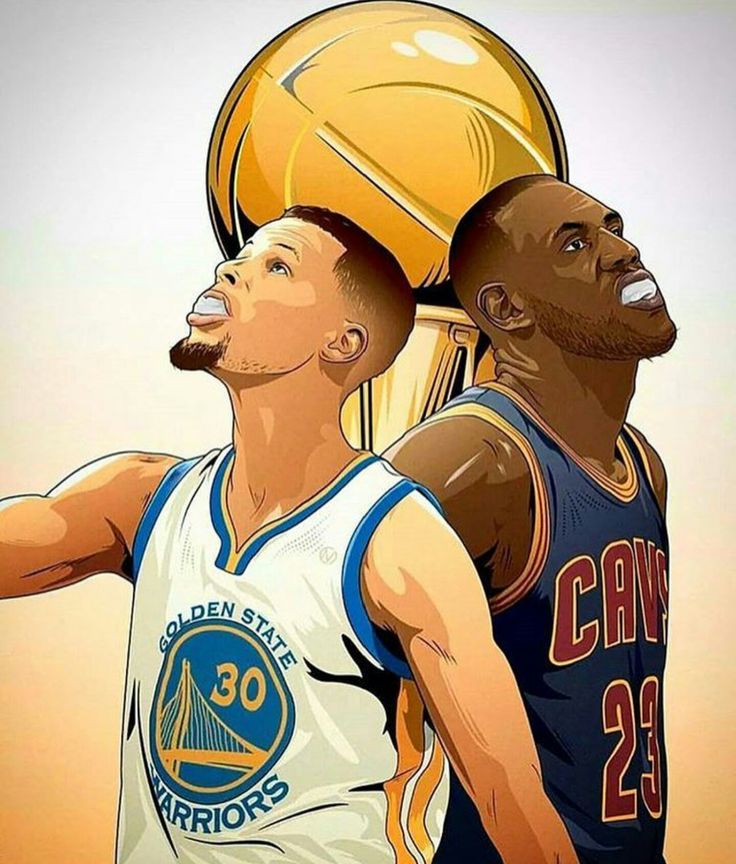
- Failing to immediately pass the ball to the nearest official when a personal foul or violation is assessed.
- Touching the ball before the throw-in has been released.
- A defender crossing the boundary line within the designated throw-in spot prior to the ball being released on a throw-in.
- A team preventing play from commencing at any time.
- Any player, coach or trainer interfering with a ball which has crossed the boundary line (Rule 8—Section II—e).
- A free throw shooter venturing fully beyond the three-point line between attempts.
- A player entering the game when beckoned by an official with his shirt untucked.
- PENALTY: The first offense is a warning. A technical foul shall be assessed with each successive offense and charged to the team. An announcement will be made by the public address announcer. The shot clock shall remain the same or reset to 14, whichever is greater, if the violation is assessed against the defensive team.
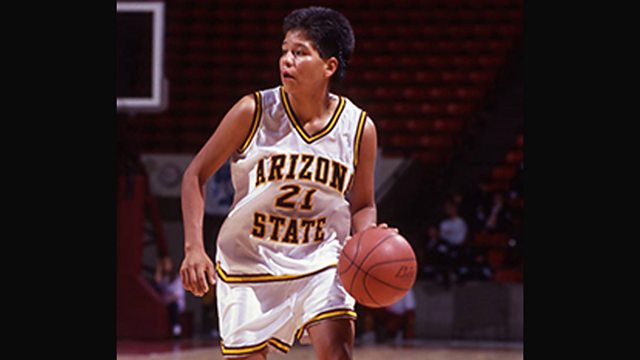 The offensive team shall be awarded a new 8 seconds to advance the ball if it is in the backcourt. There is no change in timing status if any of these violations are assessed against the offensive team. If repeated acts become a travesty, the head coach shall be notified that he is being held responsible.
The offensive team shall be awarded a new 8 seconds to advance the ball if it is in the backcourt. There is no change in timing status if any of these violations are assessed against the offensive team. If repeated acts become a travesty, the head coach shall be notified that he is being held responsible. - EXCEPTION (5): In the last two minutes of the fourth period and last two minutes of any overtime period, a technical foul will be assessed if the defender crosses or breaks the plane of the boundary line within the designated throw-in spot when an offensive player is in a position to inbound and prior to the ball being released on a throw-in.
Section III—Number of Players
- If the ball is put into play and remains in play with one team having six or more players on the court, a non-unsportsmanlike technical foul will be assessed on the team with too many players and such team would lose possession if it had possession at the time the violation was discovered.
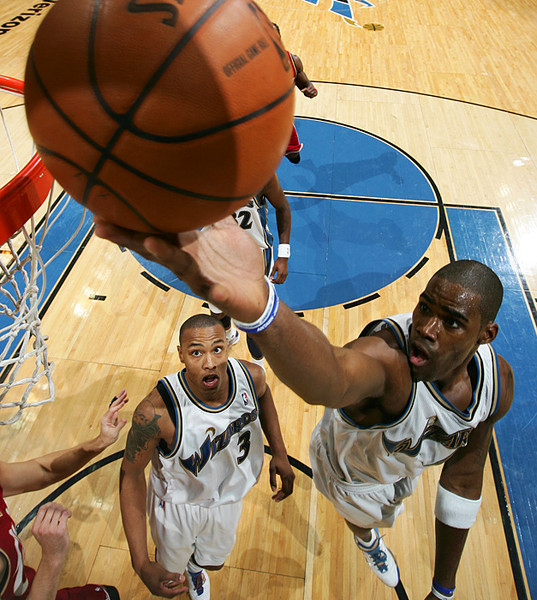 Immediately following the free throw awarded for the technical foul, the team with the correct number of players will instruct the Crew Chief to:
Immediately following the free throw awarded for the technical foul, the team with the correct number of players will instruct the Crew Chief to: - resume play from the point in time when the technical foul was assessed, under the same conditions as would have prevailed had there been no error with a throw-in, jump ball or foul shot, as If the ball is to be put into play with a throw-in, the team who shot the free throw will be awarded possession unless that team just scored and the error was discovered prior to the throw-in being released by the team with six or more players.
- nullify all play that occurred from the point in time when the ball was put into play with one team having six or more players on the court and ending when the technical foul was assessed, reset the game and shot clock to the point in time when the ball was put into play, and if the ball was put into play by:
- a throw-in, the ball shall be returned to the original throw-in spot with the ball awarded to the team with the correct number of players, or
- a missed free throw that remained in play, a jump ball shall be held at center court between any two players in the game, or
- a jump ball, the ball shall be returned to the original jump ball spot and a jump ball held with the same two
- EXCEPTION: Acts of unsportsmanlike conduct and all flagrant fouls, and points scored from any resulting free throws, shall not be nullified.
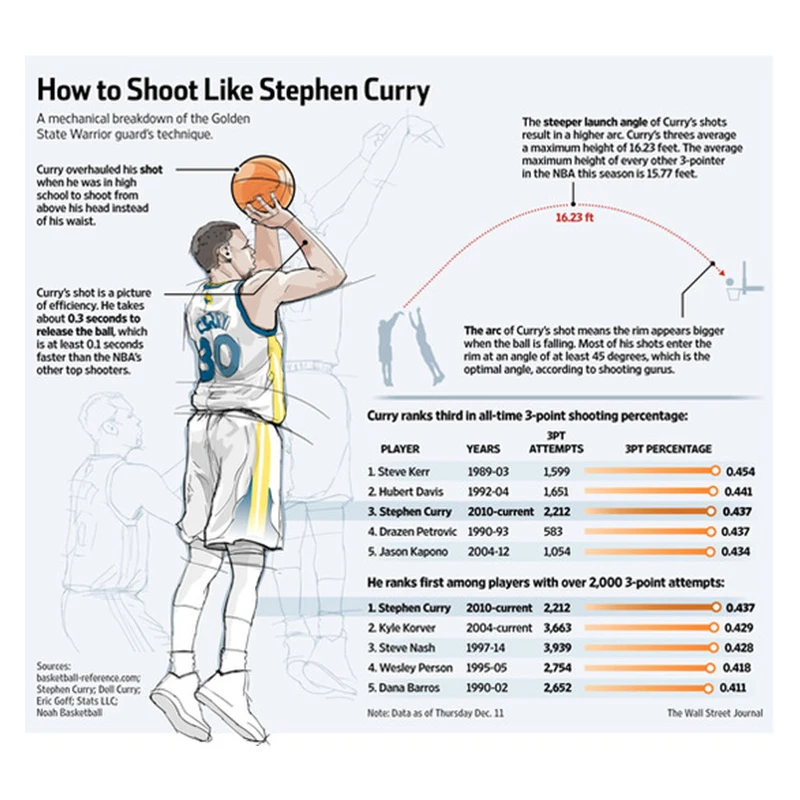
- Other errors involving the wrong number of players at the start of play, four or less, will be penalized with a non-unsportsmanlike technical foul and play shall resume from the point-of-interruption.
- EXCEPTION to a and b: If the violation occurs on (1) a free throw attempt which is to be followed by another free throw attempt, or (2) a free throw attempt that is not going to remain in play, (3) throw-in before the ball is released, (4) prior to a personal foul being assessed, or (5) jump ball before the ball is released.
Section IV—Basket Ring, Backboard or Support
- An offensive player who deliberately hangs on his basket ring, net, backboard or support during the game shall be assessed a non-unsportsmanlike technical foul.
- A defensive player who deliberately gains or maintains height or hangs on his opponent’s basket ring, net, backboard or support shall be assessed a non-unsportsmanlike technical If he touches the ball during a field goal attempt, points shall be awarded consistent with the type of shot.
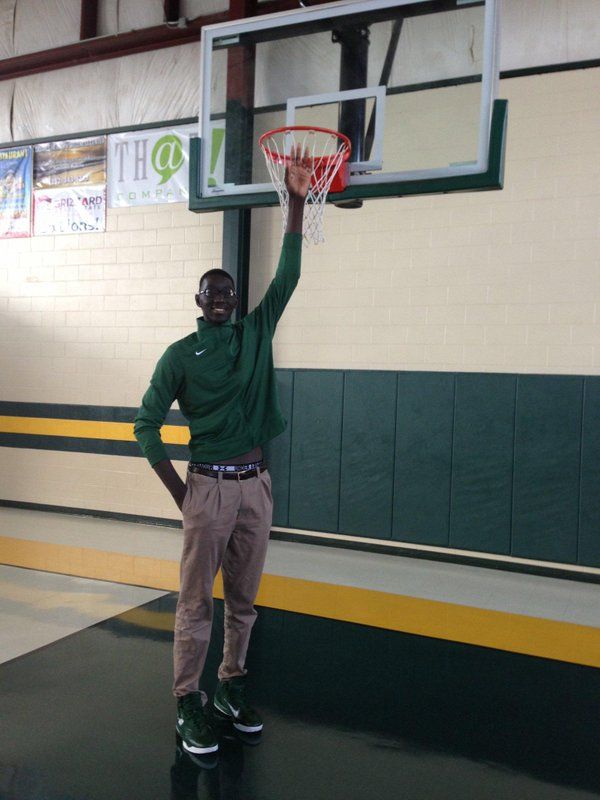
- EXCEPTION: An offensive or defensive player may hang on the basket ring, backboard or support to prevent an injury to himself or another player, with no technical foul assessed.
- Should a defensive player deliberately hang on the basket ring, net, backboard or support to successfully touch a ball which is in possession of an opponent, a non- unsportsmanlike technical foul shall be assessed.
Section V—Conduct
- An official may assess a technical foul, without prior warning, at any time. A technical foul(s) may be assessed to any player on the court or anyone seated on the bench for conduct which, in the opinion of an official, is detrimental to the game. The technical foul must be charged to an individual. A technical foul cannot be assessed for physical contact when the ball is alive.
- EXCEPTION: Fighting fouls and/or taunting with physical contact.
- A maximum of two technical fouls for unsportsmanlike acts may be assessed any player, coach, trainer, or other team bench person.
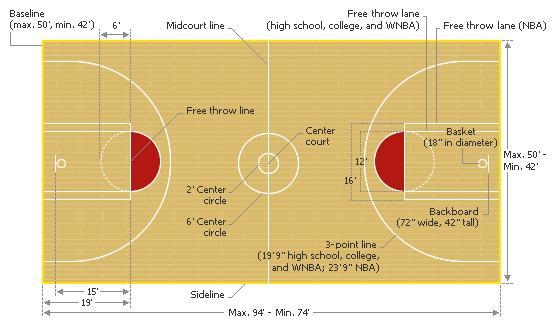 Any of these offenders may be ejected for committing only one unsportsmanlike act, and they must be ejected for committing two unsportsmanlike acts.
Any of these offenders may be ejected for committing only one unsportsmanlike act, and they must be ejected for committing two unsportsmanlike acts. - A technical foul called for (1) delay of game, (2) coaches box violations, (3) defensive 3-seconds, (4) having a team total of less or more than five players when the ball becomes alive, (5) a player hanging on the basket ring or backboard, (6) participation in the game when not on team’s active list, or (7) shattering the backboard or making the rim unplayable during the game (Comments On the Rules—G) is not considered an act of unsportsmanlike conduct.
- A technical foul shall be assessed for unsportsmanlike tactics such as:
- Disrespectfully addressing an official
- Physically contacting an official
- Overt actions indicating resentment to a call or no-call
- Use of profanity
- A coach entering onto the court without permission of an official
- A deliberately-thrown elbow or any unnatural physical act towards an opponent with no contact involved
- Taunting
- Cursing or blaspheming an official shall not be considered the only cause for imposing technical foul.
 Running tirades, continuous criticism or griping may be sufficient cause to assess a technical. Excessive misconduct shall result in ejection from the game.
Running tirades, continuous criticism or griping may be sufficient cause to assess a technical. Excessive misconduct shall result in ejection from the game. - Assessment of a technical foul shall be avoided whenever and wherever possible; but, when necessary they are to be assessed without delay or procrastination. Once a player has been ejected or the game is over, technical fouls cannot be assessed regardless of the provocation. Any additional unsportsmanlike conduct shall be reported by e-mail immediately to the League Office.
- If a technical foul is assessed to a team following a personal foul on the same team, the free throw attempt for the technical foul shall be administered first.
- The ball shall be awarded to the team which had possession at the time the technical foul was assessed, whether the free throw attempt is successful or not. Play shall be resumed by a throw-in nearest the spot where play was interrupted.
- EXCEPTION: Rule 12A—Section I and Rule 12A—Section III.
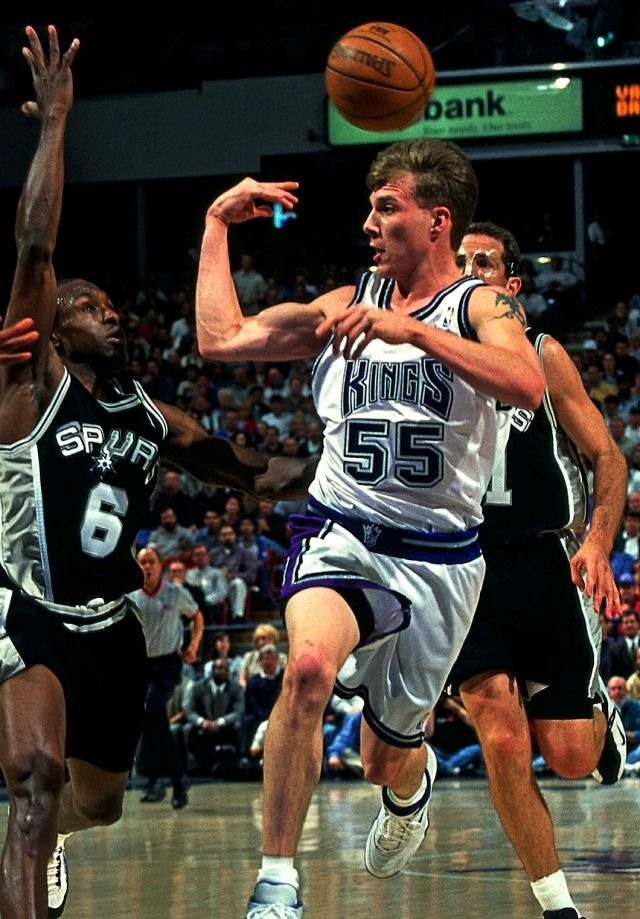
- Anyone guilty of illegal contact which occurs during a dead ball may be assessed (1) a technical foul, if the contact is deemed to be unsportsmanlike in nature, or (2) a flagrant foul, if unnecessary and/or excessive contact occurs.
- Free throws awarded for a technical foul must be attempted by a player in the game when the technical foul is
- If a substitute has been beckoned into the game or has been recognized by the officials as being in the game prior to a technical foul being assessed, he is eligible to attempt the free throw(s).
- If the technical foul is assessed before the opening tap, any player listed in the scorebook as a starter is eligible to attempt the free throw(s).
- If a technical foul is assessed before the starting lineup is indicated, any player on the squad may attempt the free throw(s).
- A technical foul, unsportsmanlike act or flagrant foul must be called for a participant to be ejected.
- EXCEPTION: Rule 12A—Section V—l—4
- A player, coach, trainer, or other team bench person must be ejected for:
- A punching foul
- A fighting foul
- Technical foul for an attempted punch or swing with no contact or a thrown elbow toward an opponent above shoulder level with no contact
- Deliberately entering the stands other than as a continuance of play
- Flagrant foul penalty (2)
- Second flagrant foul penalty (1)
- Participation in the game when not on team’s active list
- Eye guarding (placing a hand in front of the opponent’s eyes when guarding from the rear) a player who does not have possession of the ball is illegal and an unsportsmanlike technical shall be assessed.

- A free throw attempt is awarded when one technical foul is assessed.
- No free throw attempts are awarded when a double technical foul is assessed. Technical fouls assessed to opposing teams during the same dead ball and prior to the administering of any free throw attempt for the first technical foul, shall be interpreted as a double technical foul.
- The deliberate act of throwing the ball or any object at an official by a player, coach, trainer, or other team bench person is a technical foul and violators are subject to ejection from the game.
- Punching fouls, although recorded as both personal and team fouls, are unsportsmanlike acts. The player will be ejected immediately.
- Any player who throws or kicks the ball directly into the stands with force, regardless of the reason or where it lands, will be assessed a technical foul and ejected. All other instances where the ball ends up in the stands will subject the player to a possible technical foul and ejection.
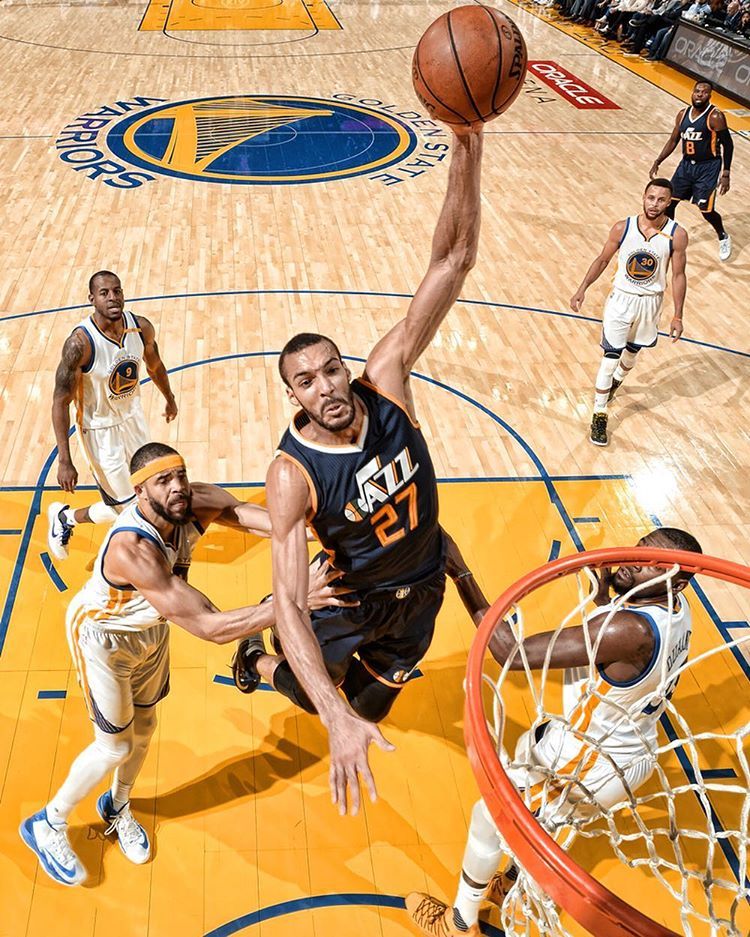
Section VI—Fighting Fouls
- Technical fouls shall be assessed players, coaches or trainers for fighting. No free throws will be attempted. The participants will be ejected immediately.
- This rule applies whether play is in progress or the ball is dead.
- If a fighting foul occurs with a team in possession of the ball, that team will retain possession on the sideline nearest the spot where play was interrupted but no nearer to the baseline than the free throw line extended.
- If a fighting foul occurs with neither team in possession, play will be resumed with a jump ball between any two opponents who were in the game at the center circle.
- A fine not exceeding $50,000 and/or suspension may be imposed upon such person(s) by the Commissioner at his sole discretion.
Section VII—Fines
-
The following progressive technical foul and ejection schedules will apply.*with a warning letter sent when the violator reaches his 10th (5th in playoffs) technical foul
- Whether or not said player(s) is ejected, a fine not exceeding $50,000 and/or suspension may be imposed upon such player(s) by the Commissioner at his sole discretion.

- During an altercation, all players not participating in the game must remain in the immediate vicinity of their bench. Violators will be subject to suspension, without pay, for a minimum of one game and fined up to $50,000.
- The suspensions will commence prior to the start of their next game.
- A team must have a minimum of eight players dressed and ready to play in every preseason and regular season game and nine in any playoff game.
- If five or more players leave the bench, the players will serve their suspensions alphabetically, according to the first letters of their last name.
- If seven bench players are suspended (assuming no participants are included), four of them would be suspended for the first game following the altercation. The remaining three would be suspended for the second game following the altercation.
- A player, coach or assistant coach, upon being notified by an official that he has been ejected from the game, must leave the playing area IMMEDIATELY and remain in the dressing room of his team during such suspension until completion of the game or leave the building.
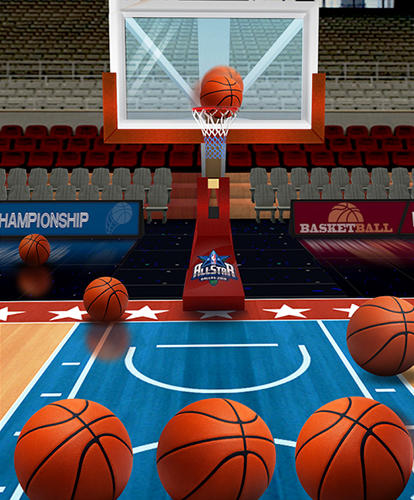 Violation of this rule shall call for an automatic fine. A fine not to exceed $50,000 and possible forfeiture of the game may be imposed for any violation of this rule.
Violation of this rule shall call for an automatic fine. A fine not to exceed $50,000 and possible forfeiture of the game may be imposed for any violation of this rule. - Any player who in the opinion of the officials has deliberately hung on the basket ring shall be assessed a non-unsportsmanlike technical foul and a fine of $2000.
- EXCEPTION: An offensive or defensive player may hang on the basket ring, backboard or support to prevent an injury to himself or another player, with no penalty.
- At halftime and the end of each game, the coach and his players are to leave the court and go directly to their dressing room, without pause or delay. There is to be absolutely no talking to game officials.
- PENALTY—$2000 fine to be doubled for any additional violation.
- Any player who is assessed a flagrant foul—penalty (2) must be ejected and will be fined a minimum of $2,000. The incident will be reported to the League Office.
Section I—Types
- A player shall not hold, push, charge into, impede the progress of an opponent by extending a hand, arm, leg or knee or by bending the body into a position that is not normal.
 Contact that results in the re-routing of an opponent is a foul which must be called immediately.
Contact that results in the re-routing of an opponent is a foul which must be called immediately. - Contact initiated by the defensive player guarding a player with the ball is not legal. This contact includes, but is not limited to, forearm, hands, or body check.
- EXCEPTIONS:
- A defender may apply contact with a forearm to an offensive player with the ball who has his back to the basket below the free throw line extended outside the Lower Defensive Box.
- A defender may apply contact with a forearm and/or one hand with a bent elbow to an offensive player in a post-up position with the ball in the Lower Defensive Box.
- A defender may apply contact with a forearm to an offensive player with the ball at any time in the Lower Defensive Box. The forearm in the above exceptions is solely for the purpose of maintaining a defensive position.
- A defender may position his leg between the legs of an offensive player in a post-up position in the Lower Defensive Box for the purpose of maintaining defensive position.
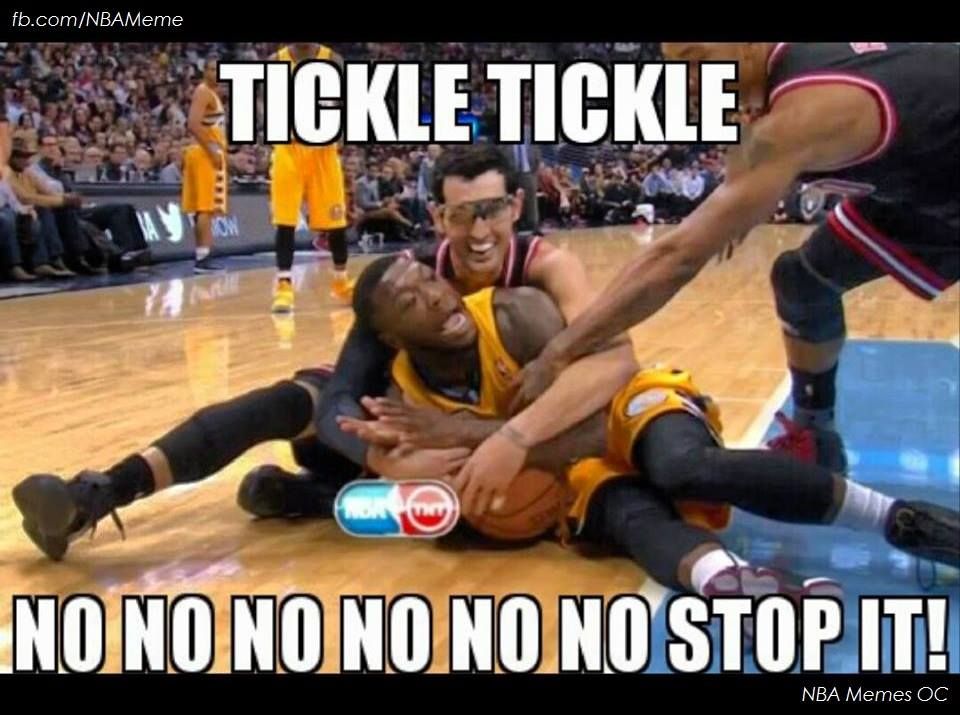 If his foot leaves the floor in an attempt to dislodge his opponent, it is a foul immediately.
If his foot leaves the floor in an attempt to dislodge his opponent, it is a foul immediately. - Incidental contact with the hand against an offensive player shall be ignored if it does not affect the player’s speed, quickness, balance and/or rhythm.
- Any player whose actions against an opponent cause illegal contact with yet another opponent has committed the personal foul.
- A personal foul committed by the offensive team during a throw-in shall be an offensive foul, regardless of whether the ball has been released.
- Contact which occurs on the hand of the offensive player, while that part of the hand is in contact with the ball, is legal.
- EXCEPTION: Flagrant and punching fouls.
- PENALTIES: The offender is charged with a personal foul. The offending team is charged with a team foul if the illegal contact was caused by the defender. There is no team foul if there are personal fouls on one member of each team or the personal foul is against an offensive player.
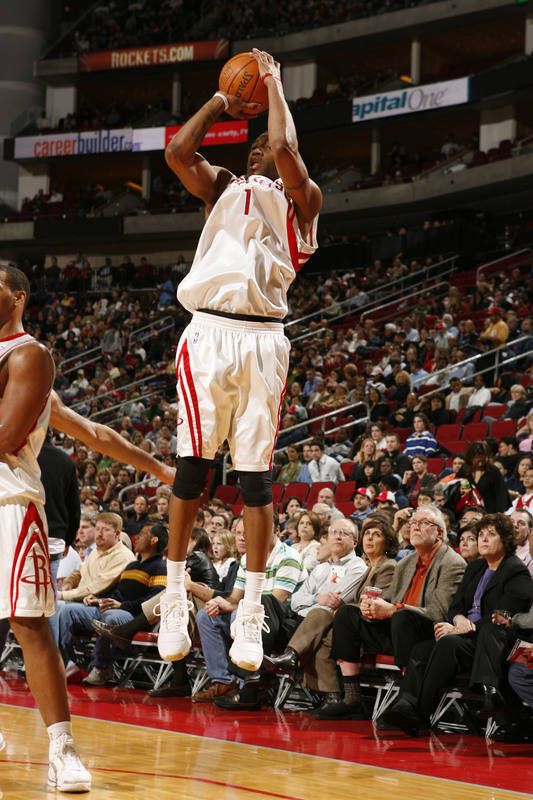 The offended team is awarded:
The offended team is awarded: - the ball out-of-bounds on the sideline at the nearest spot where play was interrupted but no nearer to the baseline than the free throw line extended if an offensive foul is assessed.
- the ball out-of-bounds on the sideline where play was interrupted but no nearer to the baseline than the free throw line extended if the personal foul is on the defender and if the penalty situation is not in effect.
- one free throw attempt if the personal foul is on the defender and there is a successful field goal or free throw on the play.
- two/three free throw attempts if the personal foul is on the defender and the offensive player is in the act of shooting an unsuccessful field goal.
- one free throw attempt plus a penalty free throw attempt if the personal foul is on the defender and the offensive player is not in the act of attempting a field goal if the penalty situation is in effect.
- two free throw attempts and possession of the ball on the sideline nearest the spot where play was interrupted if an offensive player, or a teammate, is fouled while having a clear-path-to-the-basket.
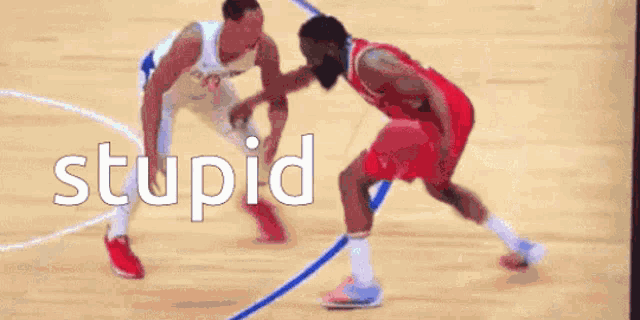 A clear path to the basket foul occurs if: (i) personal foul is committed on any offensive player during his team’s transition scoring opportunity; (ii) when the foul occurs, the ball is ahead the tip of the circle in the backcourt, no defender is ahead of the offensive player with the scoring opportunity and that offensive player is in control of the ball or a pass to him has been released; and (iii) the defensive foul deprives the offensive team of a transition scoring opportunity. A clear path to the basket foul cannot occur if (i) the offensive player is fouled in the act of shooting or (ii) the foul is caused by the defender’s attempt to intercept or deflect a pass intended for the offensive player with the transition scoring opportunity.
A clear path to the basket foul occurs if: (i) personal foul is committed on any offensive player during his team’s transition scoring opportunity; (ii) when the foul occurs, the ball is ahead the tip of the circle in the backcourt, no defender is ahead of the offensive player with the scoring opportunity and that offensive player is in control of the ball or a pass to him has been released; and (iii) the defensive foul deprives the offensive team of a transition scoring opportunity. A clear path to the basket foul cannot occur if (i) the offensive player is fouled in the act of shooting or (ii) the foul is caused by the defender’s attempt to intercept or deflect a pass intended for the offensive player with the transition scoring opportunity. - two free throw attempts if a personal foul is committed against an offensive player without the ball when his team has at least a one-man advantage on a fast break and the defensive player takes a foul to stop play.
Section II—By Dribbler
- A dribbler shall not (1) charge into an opponent who has established a legal guarding position, or (2) attempt to dribble between two opponents, or (3) attempt to dribble between an opponent and a boundary, where sufficient space is not available for illegal contact to be avoided.
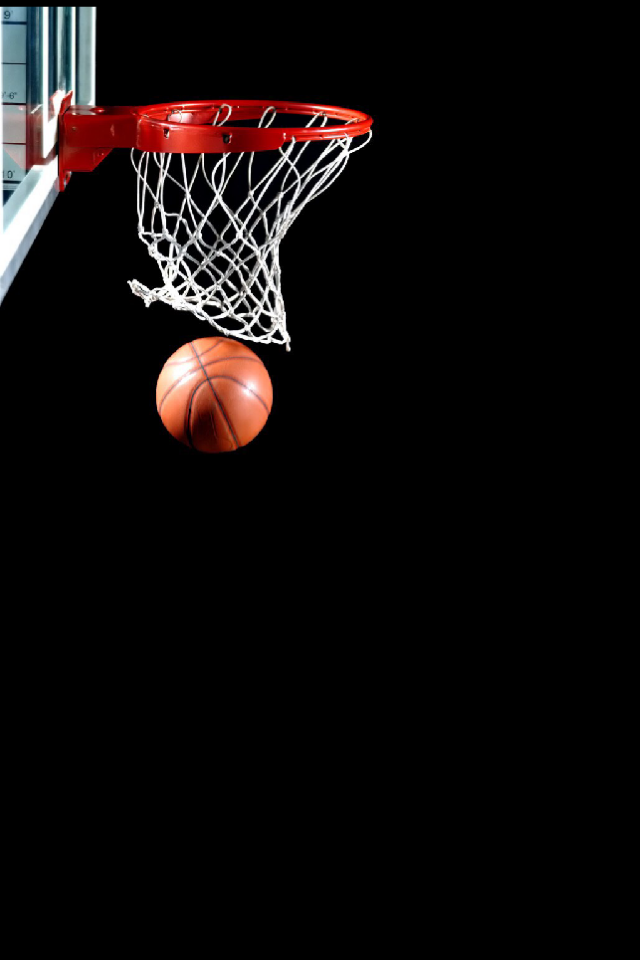
- If a defender is able to establish a legal position in the straight line path of the dribbler, the dribbler must avoid contact by changing direction or ending his dribble.
- The dribbler must be in control of his body at all times. If illegal contact occurs, the responsibility is on the dribbler.
- PENALTY: The offender is assessed an offensive foul. There is no team foul. The ball is awarded to the offended team on the sideline nearest the spot where play was interrupted but no nearer to the baseline than the free throw line extended.
- EXCEPTION: Rule 3—Section I—a.
- If a dribbler has sufficient space to have his head and shoulders in advance of his defender, the responsibility for illegal contact is on the defender.
- If a dribbler has established a straight line path, a defender may not crowd him out of that path.
- PENALTY: The defender shall be assessed a personal foul and a team foul. If the penalty is not in effect, the offended team is awarded the ball on the sideline nearest the spot where play was interrupted but no nearer to the baseline than the free throw line extended.
 If the penalty is in effect, one free throw attempt plus a penalty free throw attempt is awarded.
If the penalty is in effect, one free throw attempt plus a penalty free throw attempt is awarded.
Section III—By Screening
A player who sets a screen shall not (1) assume a position nearer than a normal step from an opponent, if that opponent is stationary and unaware of the screener’s position, or make illegal contact with an opponent when he assumes a position at the side or front of an opponent, or (3) assume a position so near to a moving opponent that he is not given an opportunity to avoid contact before making illegal contact, or (4) move laterally or toward an opponent being screened, after having assumed a legal position. The screener may move in the same direction and path of the opponent being screened.
In (3) above, the speed of the opponent being screened will determine what the screener’s stationary position may be. This position will vary and may be one to two normal steps or strides from his opponent.
Section IV—Flagrant Foul
- If contact committed against a player, with or without the ball, is interpreted to be unnecessary, a flagrant foul—penalty (1) will be assessed.
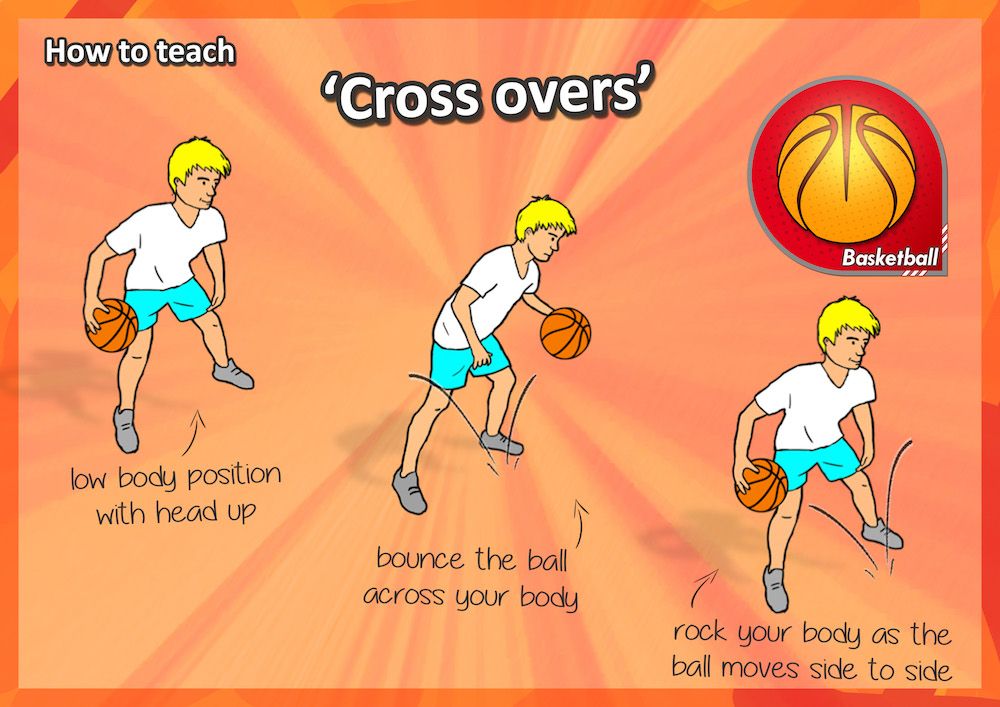 A personal foul is charged to the offender and a team foul is charged to the
A personal foul is charged to the offender and a team foul is charged to the - PENALTY: (1) Two free throws shall be attempted and the ball awarded to the offended team on either side of the court at the free throw line extended. (2) If the offended player is injured and unable to attempt his free throws, his coach will select one of the remaining four players in the game to attempt the free throws. (3) His coach will pick the substitute, who may not be replaced until the ball is legally touched by a player on the court. (EXCEPTION: Rule 3—Section V—e.) (4) The injured player may not return to the game. (EXCEPTION: Rule 9-Section II-a-(2)) (5) A player will be ejected if he commits two flagrant fouls in the same game.
- If contact committed against a player, with or without the ball, is interpreted to be unnecessary and excessive, a flagrant foul—penalty (2) will be assessed. A personal foul is charged to the offender and a team foul is charged to the
- PENALTY: (1) Two free throws shall be attempted and the ball awarded to the offended team on either side of the court at the free throw line extended.
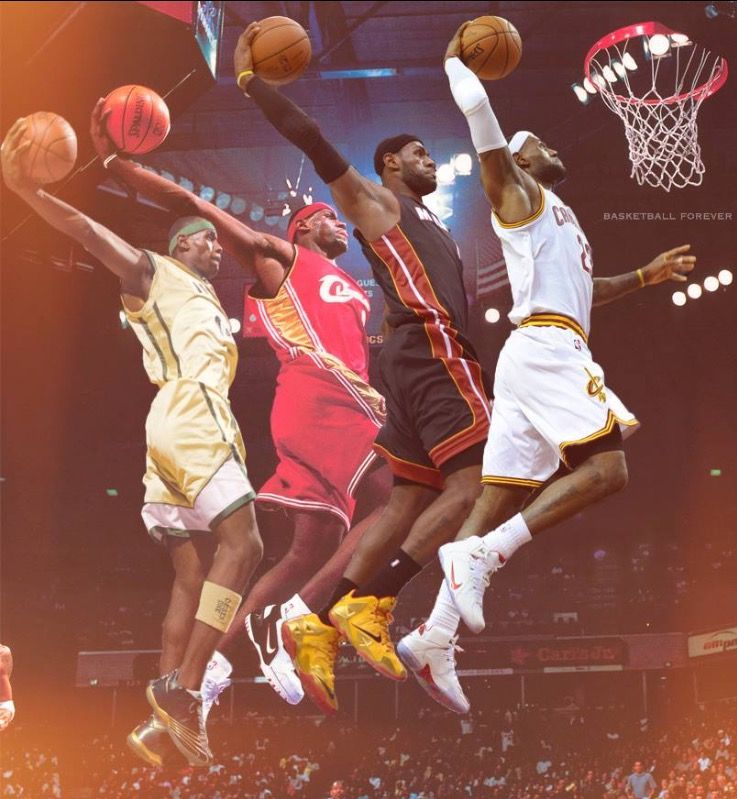 (2) If the offended player is injured and unable to attempt his free throws, his coach will select a substitute and any player from the team is eligible to attempt the free throws. (3) This substitute may not be replaced until the ball is legally touched by a player on the court. EXCEPTION: Rule 3— Section V—e. (4) The injured player may return to the game at any time after the free throws are attempted. (5) This is an unsportsmanlike act and the offender is ejected.
(2) If the offended player is injured and unable to attempt his free throws, his coach will select a substitute and any player from the team is eligible to attempt the free throws. (3) This substitute may not be replaced until the ball is legally touched by a player on the court. EXCEPTION: Rule 3— Section V—e. (4) The injured player may return to the game at any time after the free throws are attempted. (5) This is an unsportsmanlike act and the offender is ejected.
- A flagrant foul may be assessed whether the ball is dead or alive.
- A foul must be reviewed using Instant Replay to confirm it meets the criteria to be ruled a Flagrant (1) or (2).
Section V—Free Throw Penalty Situations
- Each team is limited to four team fouls per regulation period without additional penalties. Common fouls charged as team fouls, in excess of four, will be penalized by one free throw attempt plus a penalty free throw attempt.
- The first four common fouls committed by a team in any regulation period shall result in the ball being awarded to the opposing team on the sideline nearest where play was interrupted.
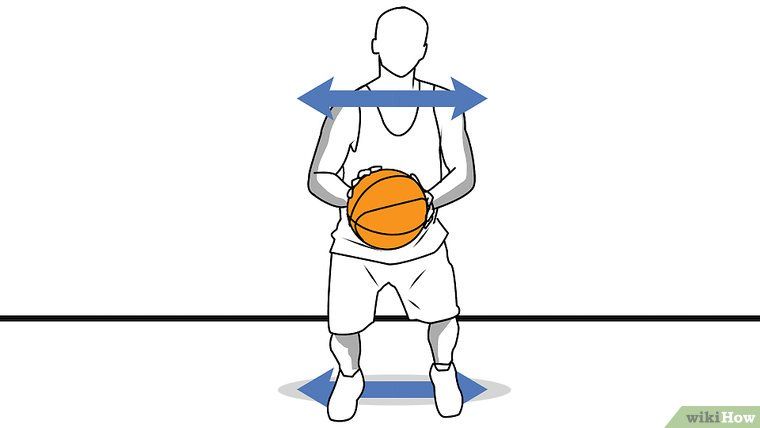 The ball shall be awarded no nearer to the baseline than the free throw line extended.
The ball shall be awarded no nearer to the baseline than the free throw line extended. - The first three common fouls committed by a team in any overtime period, shall result in the ball being awarded to the opposing team on the sideline nearest where play was interrupted. The ball shall be awarded no nearer to the baseline than the free throw line extended.
- If a team has not committed its quota of four team fouls during the first ten minutes of any regulation period, or its quota of three team fouls during the first three minutes of any overtime period, it shall be permitted to incur one team foul during the last two minutes without penalty.
- During any overtime period, common fouls charged as team fouls in excess of three, will be penalized by one free throw plus a penalty free throw attempt.
- Personal fouls which are flagrant, punching, away-from-the-play, or clear-path- to-the-basket will carry their own separate penalties and are included in the team foul total.

- Personal fouls committed during a successful field goal attempt or free throw, which result in one free throw attempt being awarded, will not result in an additional free throw attempt if the penalty situation exists.
- A maximum of three points may be scored by the same team on a successful two point field goal attempt.
- A maximum of four points may be scored by the same team on a successful three point field goal attempt.
Section VI—Double Fouls
- No free throw attempts will be awarded on double fouls, whether they are personal or technical.
- Double personal fouls shall add to a player’s total, but not to the team total.
- If a double foul occurs, the team in possession of the ball at the time of the call shall retain possession. Play is resumed on the sideline, nearest the point where play was interrupted but no nearer to the baseline than the free throw line extended. The shot clock is reset to 24 seconds if the ball is to be inbounded in the team’s backcourt or stay the same or reset to 14, whichever is greater, if the ball is to be inbounded in the frontcourt.
![]()
- If a double foul occurs with neither team in possession, or when the ball is in the air on an unsuccessful field goal or free throw attempt, play will be resumed with a jump ball at the center circle between any two opponents in the game at that time. If injury, ejection or disqualification makes it necessary for any player to be replaced, no substitute may participate in the jump ball. The jumper shall be selected from one of the remaining players in the
- If a double foul occurs on a successful field goal or free throw attempt, the team that has been scored upon will inbound the ball at the baseline as after any other
- If a double foul occurs as a result of a difference in opinion by the officials, no points can be scored and play shall resume with a jump ball at the center circle between any two opponents in the game at that time. No substitute may participate in the jump ball.
Section VII—Offensive Fouls
- A personal foul assessed against an offensive player which is neither punching or flagrant shall be penalized in the following manner:
- No points can be scored by the offensive team
- The offending player is charged with a personal foul
- The offending team is not charged with a team foul
- EXCEPTION: Rule 3—Section I—a.
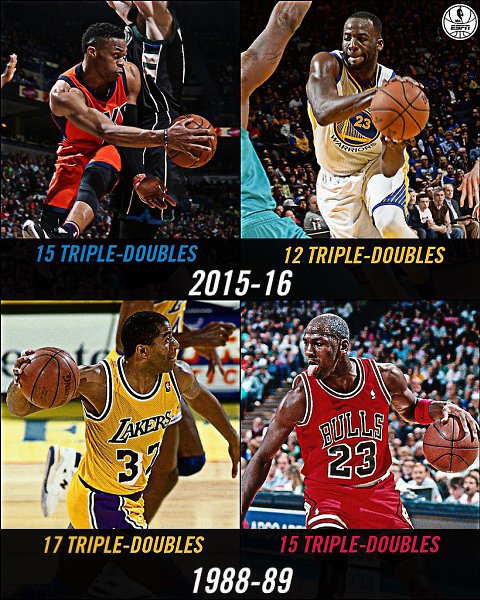 No penalty free throws are awarded.
No penalty free throws are awarded.
- The ball is awarded to the offended team out-of-bounds on the sideline at the nearest spot where play was interrupted but no nearer the baseline than the free throw line
- A personal foul assessed against an offensive player which is punching or flagrant shall be penalized in the following manner:
- No points can be scored by the offensive team
- The offending player is charged with a personal foul
- The offending team is charged with a team foul
- Two free throw attempts are awarded to the offended player
- The ball shall be awarded at the free throw line extended
Section VIII—Loose Ball Fouls
- A personal foul, which is neither a punching or flagrant, committed while there is no team control shall be administered in the following manner:
- Offending team is charged with a team foul
- Offending player is charged with a personal foul
- Offended team will be awarded possession on the sideline, nearest the spot where play was interrupted but no nearer the baseline than the foul line extended, if no penalty exists
- Offended player is awarded one free throw attempt plus a penalty free throw attempt if the offending team is in a penalty situation
- If a “loose ball” foul called against the defensive team is then followed by a successful field goal, one free throw attempt will be awarded to the offended player, allowing for the three point or four point play.
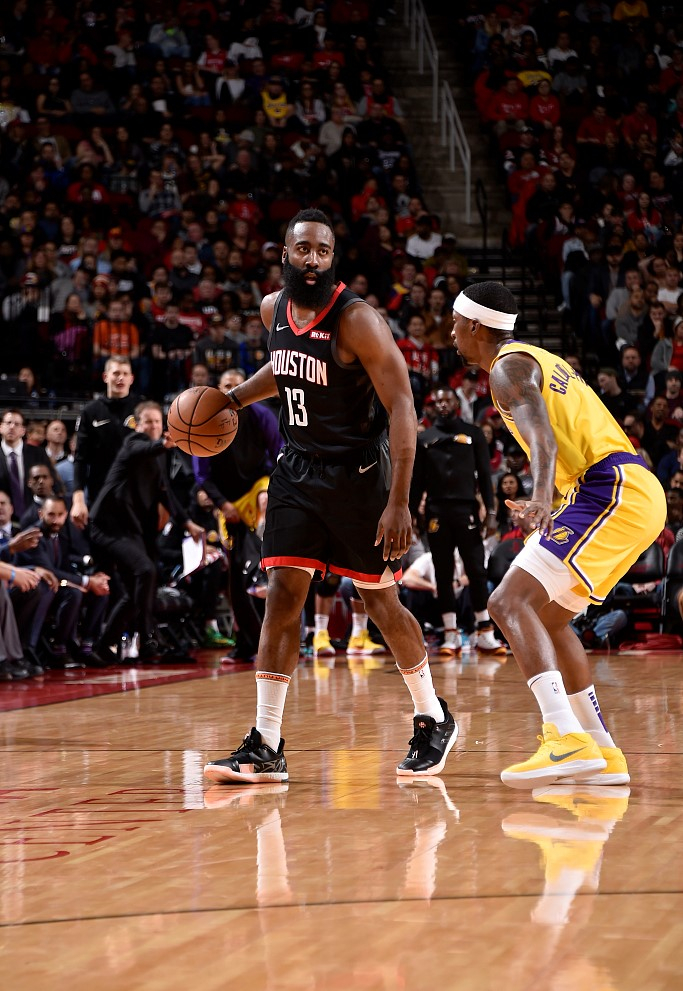 This interpretation applies:
This interpretation applies: - Regardless of which offensive player is fouled
- Whether or not the penalty situation The ball can never be awarded to the scoring team out-of-bounds following a personal foul which occurs on the same play
- If a “loose ball” foul called against the defensive team is followed by a successful free throw, one free throw will be awarded to the offended player whether or not the penalty is in effect.
- If a “loose ball” foul called against the offensive team is then followed by a successful field goal attempt by the same offensive player, no points may be scored.
Section IX—Punching Fouls
- Illegal contact called on a player for punching is a personal foul and a team foul. Two free throw attempts shall be awarded, regardless of the number of previous fouls in the period. The ball shall be awarded to the offended team out-of-bounds on either side of the court at the free throw line extended whether the free throw is successful or unsuccessful.

- Any player who throws a punch, whether it connects or not, has committed an unsportsmanlike act. He will be ejected following confirmation during review by instant replay and suspended for a minimum of one game.
- This rule applies whether play is in progress or the ball is dead.
- In the case where one punching foul is followed by another, all aspects of the rule are applied in both cases, and the team last offended is awarded possession on the sideline at the free throw line extended in the frontcourt.
- A fine not exceeding $50,000 and/or suspension may be imposed upon such player(s) by the Commissioner at his sole discretion.
Section X—Away-From-The-Play Foul
- Away from-the-play fouls, which are defined in Rule 4, Section III(h) on page 18, shall be administered as follows:
- A personal foul and team foul shall be assessed and one free throw attempt shall be awarded. The free throw may be attempted by any player in the game at the time the personal foul was committed.
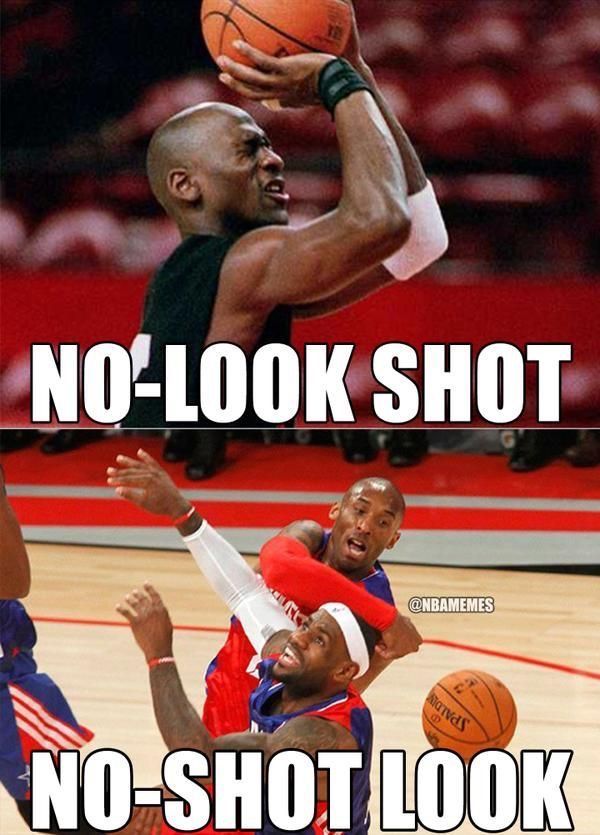
- If the foul occurs when the ball is inbounds, the offended team shall be awarded the ball on the sideline at the nearest point where play was interrupted but no nearer to the baseline than the free throw line extended.
- If the foul occurs prior to the release on a throw-in, the offended team shall be awarded the ball at the original throw-in spot, with all privileges, if any, remaining.
- EXCEPTION: Rule 12-B—Section X—b.
- In the event that the personal foul committed is a flagrant or punching foul, the play shall be administered as follows:
- A personal foul and team foul shall be assessed and the free throw shooter shall be awarded two free throw attempts. The free throws may be attempted by any player in the game at the time the flagrant foul was committed.
- If a flagrant foul—penalty (1) is assessed and the offended player is unable to participate in the game, the substitute will be selected by his coach. The two free throws may be attempted by any of the four remaining players in the game.
 The ball will be awarded to the offended team at the free throw line extended in the frontcourt. The injured player may return to the game.
The ball will be awarded to the offended team at the free throw line extended in the frontcourt. The injured player may return to the game. - If a flagrant foul—penalty (2) or punching foul is assessed and the offended player is unable to attempt his free throws because of injury, the substitute will be selected by his coach. The two free throws may be attempted by the substitute or any of the four remaining players in the game. If the offended player is unable to attempt his free throws as a result of being ejected, any of the four remaining players may attempt the free throws. The ball will be awarded to the offended team at the free throw line extended in the frontcourt. The injured player may return to the game.
What is a foul in basketball: types of technical fouls
A foul is a violation that involves contact between two or more players. Positioned more seriously than non-compliance with the rules of seconds or gears. Free throws can be awarded for fouls and players receive warnings. All this was done in order to make basketball a non-contact game in which strength would be less important than agility or speed. Below in the article the main types of fouls, penalties for receiving them, tips on how to avoid them will be analyzed.
All this was done in order to make basketball a non-contact game in which strength would be less important than agility or speed. Below in the article the main types of fouls, penalties for receiving them, tips on how to avoid them will be analyzed.
Types of fouls
Since many people have been playing basketball for a long time, different types of fouls have appeared. For situations of contact with an opponent or insulting a referee, different sanctions are needed. Therefore, the NBA distinguishes the following types of fouls:
- Personal. This foul is due to personal contact. If the opponent made a throw upon contact, then you need to look at the result. The ball hit the ring - the victim takes one free kick. The ball did not hit the ring - the victim performs as many throws as he could earn if there was a goal.
If the foul was committed while the opponent was not shooting, then there are also two options. The team scored 5 violations in the quarter - the victim takes two free throws.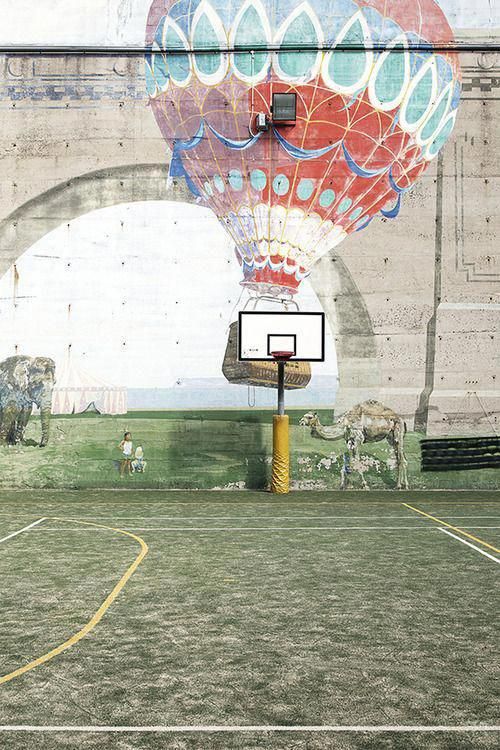 The team did not score 5 violations in the quarter - a throw-in is taken.
The team did not score 5 violations in the quarter - a throw-in is taken. - When attacking. If, during an attack, a player plays too aggressively, tries to push the opponent away, does not allow him to get close to the ball, hits the leg or arm, then this is a violation. The referee will penalize that athlete's team, pass the ball to the opponents and restart play.
- Reciprocal. If, within a short period of time, two enemy players foul at the same time, the referee awards a double foul. Both athletes can receive a warning, and no free throws go to either.
- Unsportsmanlike. If a player exhibits unsportsmanlike conduct, the referee will issue a warning for an unsportsmanlike foul. Athletes often earn such a penalty when they clash with rivals or get into an open fight. But you should be more careful, because after the second such warning, the player will be removed from the site.
- Disqualifying.
 If a player behaves in a highly inappropriate manner, the referee may send him off immediately. Usually this happens due to an attack on one of the players or a tough skirmish with the match staff. The athlete will be disqualified from the court, and another basketball player will take his place.
If a player behaves in a highly inappropriate manner, the referee may send him off immediately. Usually this happens due to an attack on one of the players or a tough skirmish with the match staff. The athlete will be disqualified from the court, and another basketball player will take his place.
There is another type of foul - technical. It is described in more detail below.
Technical fouls
If a player allows himself to insult the referee or staff, he commits a technical foul. Such violations are punished depending on how the judge decides. He can say that the ball is in touch, as well as award free throws. Sometimes such scandals and squabbles happen within the site. Often technical fouls are called if players are deliberately playing for time.
It is interesting that not only athletes can get technical violations, but also the staff, coaches, even assistant referees. There are only few such cases in history, but if someone follows the match too emotionally, then the referee has every right to remove this person.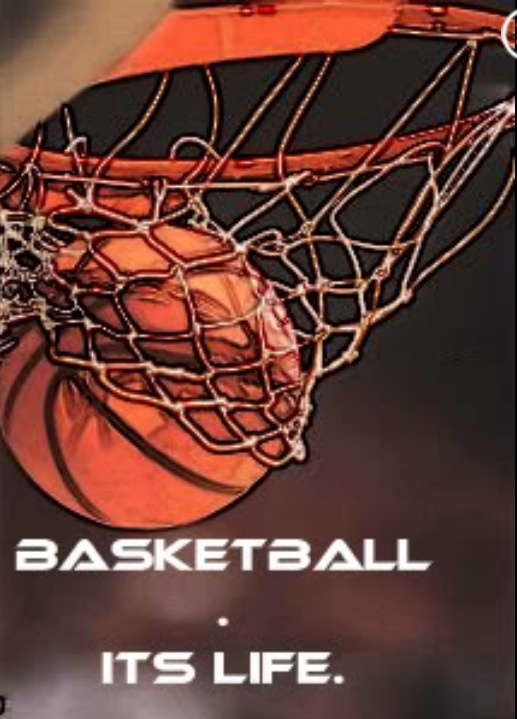 In recent times, technical fouls have often been called for displaying racism or any other ethnic slur.
In recent times, technical fouls have often been called for displaying racism or any other ethnic slur.
Maximum number of fouls before disqualification
In the game, the referee keeps the score for fouls for each team and player individually. For example, if a team has committed fewer than five infractions in a quarter, then it will be subject to a smaller sanction for actions that do not comply with the rules. This rule is used quite often in modern realities. The tight game and fast pace of the players makes them often take risks, commit fouls against opponents.
For an individual player, the maximum number of fouls is 5 (6 in the NBA). After receiving the last violation, the judge will disqualify the athlete from the area. The removed player will not be able to return to this match, and after the game he will have to explain himself to the coach and the team. In basketball, this situation is quite rare, but all judges remember this rule and are ready to calm down the athlete at any time by kicking him off the court.
Subtleties: how to avoid getting fouled?
In order to avoid violations, it is worth remembering the “cylinder” rule. It lies in the fact that the player imagines a cylinder around which he cannot put his arms and legs. All the defender can do is jump and intercept the ball, blocking shots or passes. Thus, the artificial border will not allow contact with the attacker. The “top hat” rule is used by both professional players and beginners.
To avoid a foul, you need to keep your emotions under control at all times. It's hard to believe, but most dismissals in basketball happen for this very reason. The offensive lag of the team or the “blindness” of the referee greatly offends the players. They begin to actively collide with the opponent, thus trying to calm their rage. After removal, very often basketball players apologize and regret that they succumbed to an emotional outburst.
You can avoid violations if you hone your defensive skills. Defense is one of the most difficult parts of the basketball game.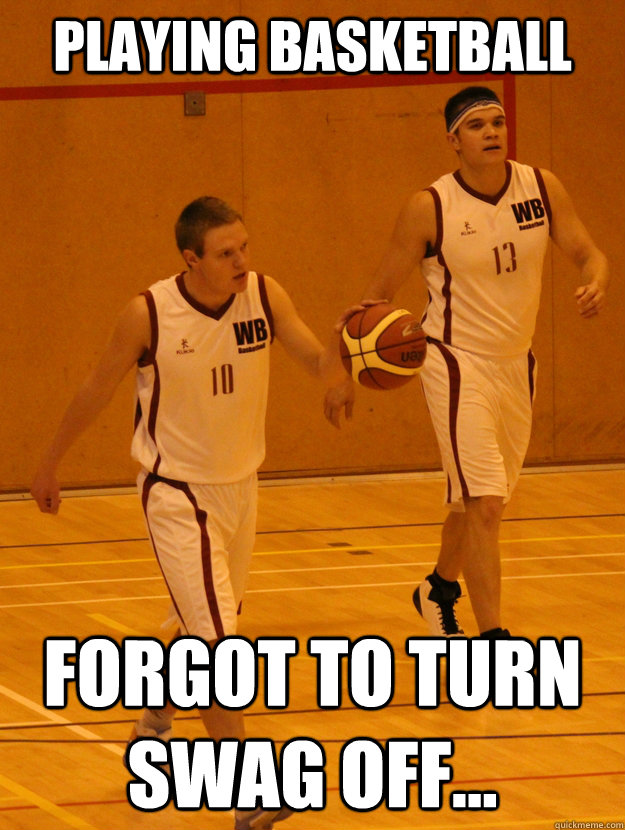 For a good defense, it is worth asking a teammate to coach a defensive player with various passes and dribbling. You can hone blocks or pass interceptions. Now in the arsenal of players there are a large number of simulators that shoot basketballs, and the defender needs to quickly intercept them.
For a good defense, it is worth asking a teammate to coach a defensive player with various passes and dribbling. You can hone blocks or pass interceptions. Now in the arsenal of players there are a large number of simulators that shoot basketballs, and the defender needs to quickly intercept them.
It's worth saying that a good defender is a massive athlete. He should have high agility along with the ability to knock well. If the attacker passes under the ring, such a player will be able to stop the attack. He will rely on his speed, and in extreme cases, on a strong body with which to repel the attacker. All these nuances are perfected in the hall.
What are fouls in basketball?
What are basketball fouls?
B Basketball foul is a violation of the rules due to personal contact with an opponent and / or unsportsmanlike conduct. Basketball Rules prohibit hitting an opponent on the hands, pushing him, holding him with his hands, stepping on his feet, meeting with his foot (both straight and bent at the knee).
What is an offensive foul?
Personal foul is issued to a specific player who committed the violation. Unsportsmanlike foul is awarded if the referee considers that the player did not participate properly in the rally. Offensive foul Interfering with a player during an attack on the hoop.
What is a team foul?
Art. 41.
What is a Disqualifying Foul in basketball?
38.
What is the difference between a technical foul and an unsportsmanlike one?
Technical foul is a foul not caused by contact with an opponent. ... It should be remembered that unsportsmanlike foul is punished only by players and only for game violations. Technical same fouls can be received by both basketball players on the court and representatives of the bench.
How many fouls can a player get in one game according to Fib rules?
A player may receive any number of personal and technical fouls without being sent off (but sent off for 2 unsportsmanlike). > Substitutions are made without the participation of the referee, but only when the ball is “dead” (before “check”), only behind the “centre” line and only with a partner touching.
> Substitutions are made without the participation of the referee, but only when the ball is “dead” (before “check”), only behind the “centre” line and only with a partner touching.
How many criteria for an unsportsmanlike foul in basketball?
To facilitate decision making, officials are required to use one of the five existing criteria to determine whether Unsportsmanlike foul should be called. The criteria are called C1, C2, C3, C4 and C5. There is no legal attempt to play the ball in accordance with the spirit and purpose of the rules.
What is pressure in basketball?
Pressing - the process of increased guarding (pursuit) of the defenders of the opposing team throughout the court. AT basketball pressing is a very popular way to organize a team's defense. ... Let's single out the main advantages of defensive pressing in basketball .
What is defense in basketball?
Zone defense (eng. zone defense) in basketball - team defense strategy in which each player must defend within a certain zone on the court, and not against a specific player, as in personal defense .
zone defense) in basketball - team defense strategy in which each player must defend within a certain zone on the court, and not against a specific player, as in personal defense .
What is a pass in basketball?
How is the cross pass organized in basketball ? Cross pass is a combination when attacking, when two attackers pass forward from different sides past the teammate who has the ball. ... Once on the flank, basketball player can make a throw from there, return the ball back or try to give it to the center.
What does a run mean in basketball?
Jogging (English travelling) - violation of the rules at Basketball : Prohibited movement of one or both feet in any direction while in control of the ball on the court beyond the limits. ... to lift both feet off the floor, provided that they part with the ball (throw or pass) before landing.
What is a run and a foul?
Passing is a technique by which a player passes the ball to another player on the team.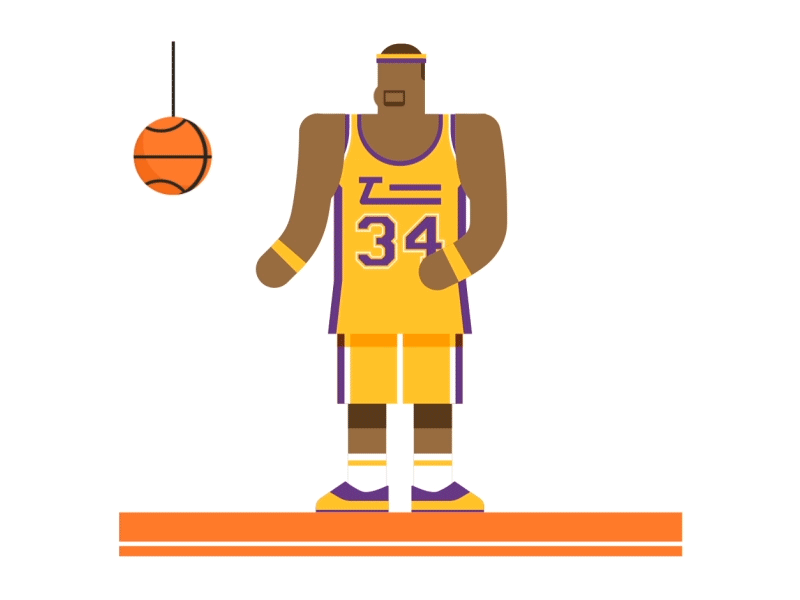 The basis of teamwork in basketball. Jogging - moving the legs of a basketball player beyond the limits established by the rules. Foul - non-compliance with the rules of the game of basketball caused by personal contact or unsportsmanlike conduct.
The basis of teamwork in basketball. Jogging - moving the legs of a basketball player beyond the limits established by the rules. Foul - non-compliance with the rules of the game of basketball caused by personal contact or unsportsmanlike conduct.
How many steps do you need to take in basketball?
According to all official rules, after fixing the ball in his hands, the player can take two steps , and during the third step before landing, you must either throw into the ring or give the ball to a partner. If three steps were made with a landing, then this situation is considered a violation and the ball goes to the opposing team.
What is the pivot foot in basketball?
when none of the legs has contact with the floor and the player lands simultaneously on two legs , then when one leg moves or leaves the floor , the second becomes the support ; when both feet have no contact with the floor and the player lands on one foot , it becomes ground .
What is the name of the movement with the ball in the hands of more than 2 steps?
Run
What is the 5 second rule in basketball?
Rule 5 seconds is the time given to a player to put the ball into play, take a free kick or free kick. The countdown starts from the moment the player picks up the ball. ... Like all other rules of , this allows you to make the game faster and not spend a lot of time on free throws and outs.
What physical qualities does the game of basketball develop?
Basketball is a sports game that develops players: speed, agility, jumping ability, quickness, coordination, flexibility, endurance, all those qualities that a basketball player needs to successfully master this game.
What physical qualities does artistic gymnastics develop?
Gymnastics is one of the main means of comprehensive physical education of schoolchildren. gymnastics classes develop important motor skills qualities (strength, speed, endurance and especially dexterity), as well as strong-willed qualities (decisiveness, courage).
What physical and moral qualities does basketball develop?
Even to say that basketball develops endurance, jumping ability, speed and physical strength does not make any sense. It is obvious. When playing, absolutely all muscle groups are involved. Coordination, speed of thinking and decision making also develop very well.
What physical and moral-volitional qualities does basketball develop?
So the main physical qualities that determine the OUFP of a basketball player are strength, dexterity, flexibility, general and speed-strength endurance, coordination, speed. The most important of these qualities are speed, agility and endurance. preparation and level physical development .
What should be a good basketball player?
Physical qualities basketball player - that's what you need to take as a basis and what to build on, because is a good basketball player , first of all, should be dexterous, a little cunning, strong, fast and hardy.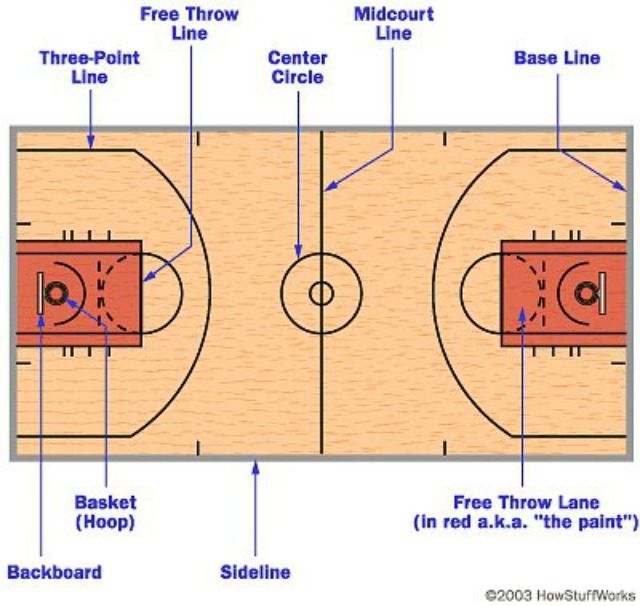 ... During the game, basketball players run over 8 kilometers, make several dozen jumps.
... During the game, basketball players run over 8 kilometers, make several dozen jumps.
What qualities does playing football develop?
So football is the kind of sport where important character traits are formed, many skills are developed: the ability to communicate, the ability to withstand physical stress. Game develops coordination and dexterity, forms a certain way of thinking, the ability to quickly respond and make decisions.
What qualities develop when playing volleyball?
On a highly developed base of the above physical qualities develop special physical qualities necessary for playing volleyball : "explosive" strength, speed of movement and jumping ability, speed, jumping and playing endurance, acrobatic and jumping dexterity.
What basic physical quality is most needed when playing volleyball?
Volleyball is a non-contact combination sport where each player has a strict specialization on the court.